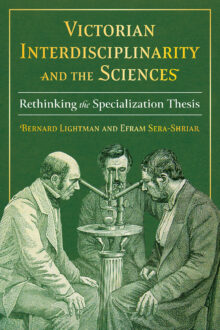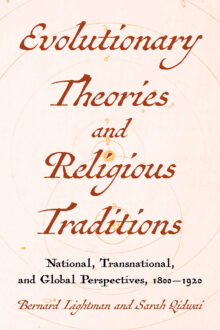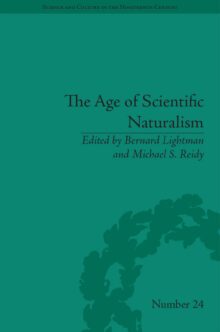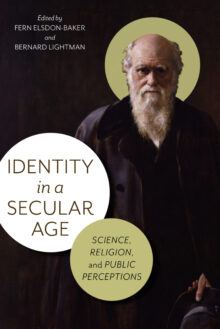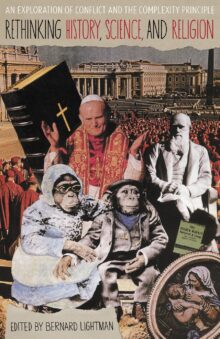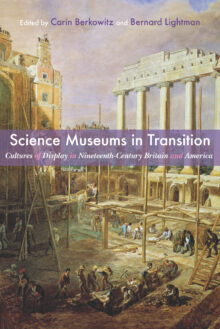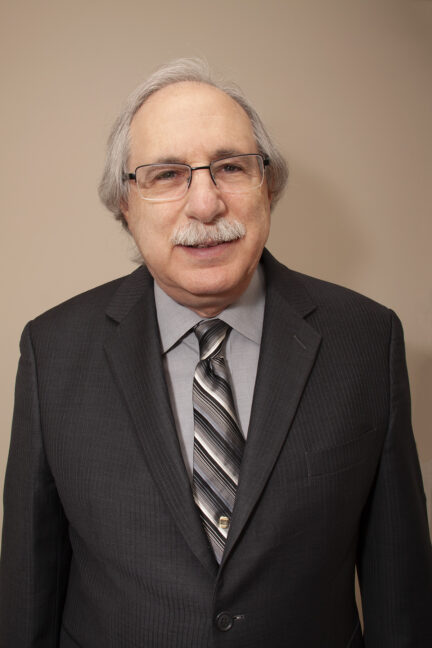
Bernard Lightman
Bernard Lightman is distinguished research professor in the Humanities Department at York University and past president of the History of Science Society. He is the editor of Rethinking History and Science and Religion and coeditor of Science Periodicals in Nineteenth-Century Britain and Identity in a Secular Age. He also serves as a general editor for The Correspondence of John Tyndall and the Science and Culture in the Nineteenth Century series at the University of Pittsburgh Press.
Victorian Interdisciplinarity and the Sciences
Rethinking the Specialization Thesis
The specialization thesis—the idea that nineteenth-century science fragmented into separate forms of knowledge that led to the creation of modern disciplines—has played an integral role in the way historians have described the changing disciplinary map of nineteenth-century British science. This volume critically reevaluates this dominant narrative in the historiography. While new disciplines did emerge during the nineteenth century, the intellectual landscape was far muddier, and in many cases new forms of specialist knowledge continued to cross boundaries while integrating ideas from other areas of study. Through a history of Victorian interdisciplinarity, this volume offers a more complicated and innovative analysis of discipline formation. Harnessing the techniques of cultural and intellectual history, studies of visual culture, Victorian studies, and literary studies, contributors break out of subject-based silos, exposing the tension between the rhetorical push for specialization and the actual practice of knowledge sharing across disciplines during the nineteenth century.
Evolutionary Theories and Religious Traditions
National, Transnational, and Global Perspectives, 1800–1920
Before the advent of radio, conceptions of the relationship between science and religion circulated through periodicals, journals, and books, influencing the worldviews of intellectuals and a wider public. In this volume, historians of science and religion examine that relationship through diverse mediums, geographic contexts, and religious traditions. Spanning within and beyond Europe and North America, chapters emphasize underexamined regions—New Zealand, Australia, India, Argentina, Sri Lanka, Egypt, and the Ottoman Empire—and major religions of the world, including Christianity, Hinduism, Buddhism, Confucianism, and Islam; interactions between those traditions; as well as atheism, monism, and agnosticism. As they focus on evolution and human origins, contributors draw attention to European scientists other than Darwin who played a significant role in the dissemination of evolutionary ideas; for some, those ideas provided the key to understanding every aspect of human culture, including religion. They also highlight central figures in national contexts, many of whom were not scientists, who appropriated scientific theories for their own purposes. Taking a local, national, transnational, and global approach to the study of science and religion, this volume begins to capture the complexity of cultural engagement with evolution and religion in the long nineteenth century.
The Age of Scientific Naturalism
Tyndall and His Contemporaries
Physicist John Tyndall and his contemporaries were at the forefront of developing the cosmology of scientific naturalism during the Victorian period. They rejected all but physical laws as having any impact on the operations of human life and the universe. Contributors focus on the way Tyndall and his correspondents developed their ideas through letters, periodicals and scientific journals and challenge previously held assumptions about who gained authority, and how they attained and defended their position within the scientific community.
Identity in a Secular Age
Science, Religion, and Public Perceptions
Although historians have suggested for some time that we move away from the assumption of a necessary clash between science and religion, the conflict narrative persists in contemporary discourse. But why? And how do we really know what people actually think about evolutionary science, let alone the many and varied ways in which it might relate to individual belief? In this multidisciplinary volume, experts in history and philosophy of science, oral history, sociology of religion, social psychology, and science communication and public engagement look beyond two warring systems of thought. They consider a far more complex, multifaceted, and distinctly more interesting picture of how differing groups along a spectrum of worldviews—including atheistic, agnostic, and faith groups—relate to and form the ongoing narrative of a necessary clash between evolution and faith. By ascribing agency to the public, from the nineteenth century to the present and across Canada and the United Kingdom, this volume offers a much more nuanced analysis of people’s perceptions about the relationship between evolutionary science, religion, and personal belief, one that better elucidates the complexities not only of that relationship but of actual lived experience.
Rethinking History, Science, and Religion
An Exploration of Conflict and the Complexity Principle
The historical interface between science and religion was depicted as an unbridgeable conflict in the last quarter of the nineteenth century. Starting in the 1970s, such a conception was too simplistic and not at all accurate when considering the totality of that relationship. This volume evaluates the utility of the “complexity principle” in past, present, and future scholarship. First put forward by historian John Brooke over twenty-five years ago, the complexity principle rejects the idea of a single thesis of conflict or harmony, or integration or separation, between science and religion. Rethinking History, Science, and Religion brings together an interdisciplinary group of scholars at the forefront of their fields to consider whether new approaches to the study of science and culture—such as recent developments in research on science and the history of publishing, the global history of science, the geographical examination of space and place, and science and media—have cast doubt on the complexity thesis, or if it remains a serviceable historiographical model.
Science Museums in Transition
Cultures of Display in Nineteenth-Century Britain and America
The nineteenth century witnessed a dramatic shift in the display and dissemination of natural knowledge across Britain and America, from private collections of miscellaneous artifacts and objects to public exhibitions and state-sponsored museums. The science museum as we know it—an institution of expert knowledge built to inform a lay public—was still very much in formation during this dynamic period. Science Museums in Transition provides a nuanced, comparative study of the diverse places and spaces in which science was displayed at a time when science and spectacle were still deeply intertwined; when leading naturalists, curators, and popular showmen were debating both how to display their knowledge and how and whether they should profit from scientific work; and when ideals of nationalism, class politics, and democracy were permeating the museum’s walls.
Contributors examine a constellation of people, spaces, display practices, experiences, and politics that worked not only to define the museum, but to shape public science and scientific knowledge. Taken together, the chapters in this volume span the Atlantic, exploring private and public museums, short and long-term exhibitions, and museums built for entertainment, education, and research, and in turn raise a host of important questions, about expertise, and about who speaks for nature and for history.

